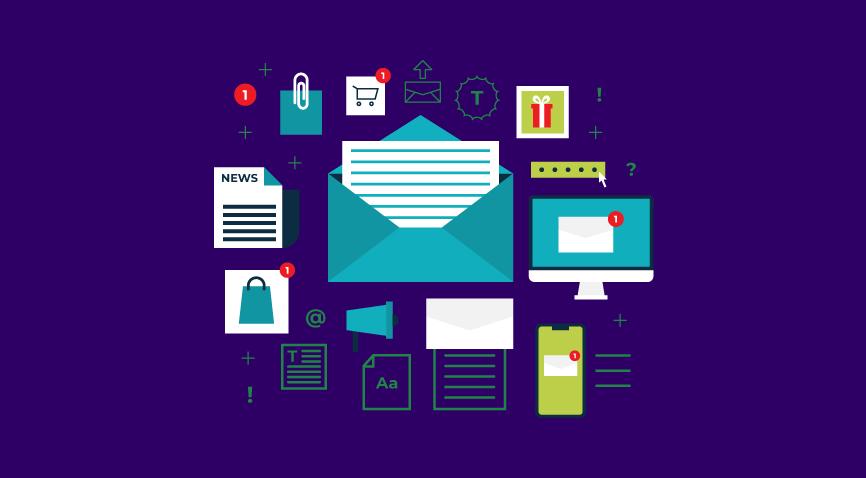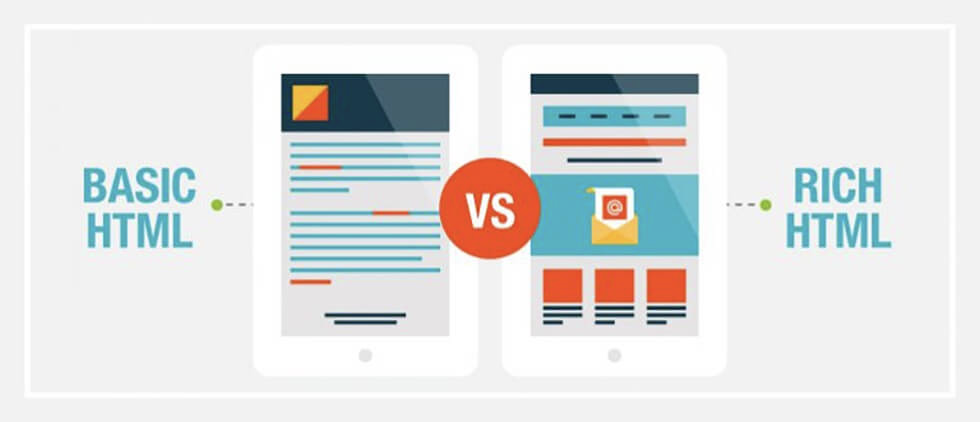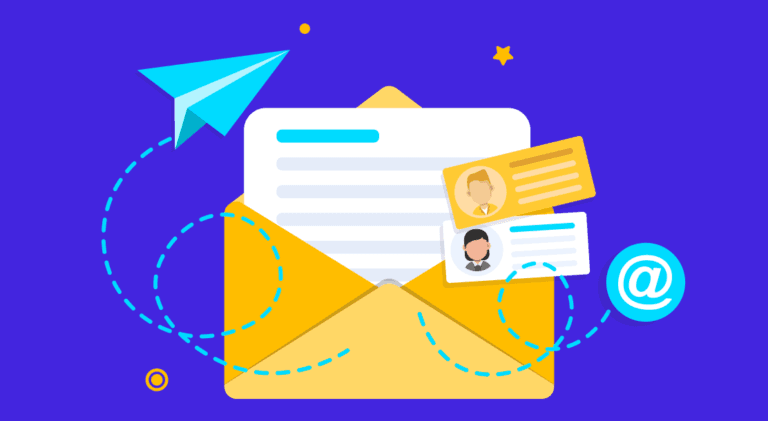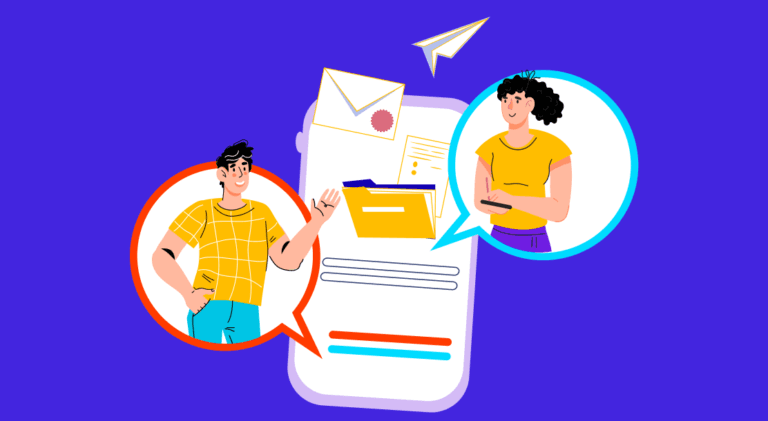Email Marketing: 10 Tips for Writing Effective Marketing Emails

Email marketing is the newest and most profitable trend in the digital world. It is a direct marketing channel that allows you to send emails to customers who consented to receive email communications from your brand/business. Therefore, learning the art of writing marketing emails has become the need of the hour.
Emails sent to people could be promotional, informational, or serve a specific purpose for the customer. Newsletters are the perfect example of email marketing. These emails are sent to drive sales, launch new products or services, or build a community and bring together your target audience.
Tips for Effective Email Marketing Writing
1. Use actionable language
Your subject line should say exactly what your email comprises. The subject line should convince the consumer to do what you want them to do without feeling threatened or pressured. The subject line shouldn’t be commanding; it should be compelling.
For example, instead of writing ‘Purchase tickets for Coldplay’s Concert today,’ write ‘Don’t miss out on the Coldplay Concert this weekend’ or ‘It’s a date with Coldplay this weekend.’
Using actionable language in your email marketing gives the recipient a clear idea about what they will find in the email.
Therefore, using clickbait titles is never a good idea because they might work fine initially but will prove dangerous in the long run. When people realize that your emails’ subject lines don’t match the body of the email, they will either unsubscribe or block you.
2. Personalize the message
Subscribers are aware that the emails they receive are sent to other consumers, too. Therefore, personalized emails perform better than regular bulk emails. Personalizing an email subject line could be as simple as adding the subscriber’s first name to your email copy.
It is crucial to segment your audience according to their needs. For example, if you are a furniture store with a few customers who want furniture to rent and some who wish to exchange their old furniture for new. Consider sending out two emails with subject lines like, ‘Bored of your sofa? Rent a new one!’ or ‘Exchange your old furniture and get home the trendiest designs.’
If each segmented subscriber receives one of these more personalized emails tailored to their specific needs, they are much more likely to open it than non-segmented subscribers.
3. Clarity first, catchy second
Of course, a catchy subject line will surely gain the subscribers’ attention, but it wouldn’t mean anything if the email content is not aligned with the subject line. Always prioritize the clarity of your subject line. Any clear subject line can be funny, catchy, sentimental, or entertaining. Never sacrifice the clarity of your subject line to be catchy or funny.
For example, if you are a restaurant that has come up with a new dish that includes two opposite ingredients or dishes that nobody would have thought of as one, you may try sending out a launch email with the subject line ‘It’s a cake. It’s wine. It’s a wine cake.’
Some of these topic lines make you laugh, while others are strange enough to capture your interest. When you open an email, it is always apparent what you will get. The email copywriting template below captures the essence of being personal and being clear about what to expect from the email.

4. Match the subject line and email content
One of the most important email marketing tips is to match the subject line and the body of the email. The subject line should summarize what to expect in the rest of the email. Your email should deliver what your subject line promises. When subscribers don’t get what the subject line says, they will unsubscribe. This also affects the click rate as it plummets exponentially.
A vague and less accurate subject line would have a much lower click-through rate than one that is clearer, concise, and accurate.
For example, if you are a travel agent and want to update your community about the slashed flight prices, let your subject line say that only. An email with a vague subject line like ‘aviation updates’ or ‘important flight information’ will likely land in the trash bin. However, a subject line like ‘Flight Rates Like Never Before’ will likely get a better click-through rate.
5. Use second-person pronouns
When a message is written using second-person pronouns, it feels more personal – as if it has been written for an individual user. The sort of pronouns you employ and the frequency with which each appears are equally significant. Instead of talking about yourself, you should talk about the customer and focus your message on their needs.
Use pronouns like ‘you,’ ‘your,’ and avoid using pronouns like ‘ours,’ ‘we,’ ‘our.’ After all, it’s the consumer you want to prioritize and not yourself.
Look at the image below and notice the usage of second-person pronouns.

6. Make it relevant
The copy of the email marketing message should aim to promote relevance through customization, just as the subject line should. You’ll need more than a dynamic name tag for your email message to persuade readers that what’s inside is relevant to them. As a result, start the email by explaining how you know each other.
For example, an email from an insurance agent may read as ‘Your policy is expiring soon.’ And, the email content could start with a greeting that goes on to check with the subscriber if they are doing fine. Then tell them about their policy expiring soon and layout new options to renew it. This builds a connection with the reader and lets them engage with you. The click-through rate of such emails is relatively high.
7. Benefits over features
Most emails focus on explaining and elaborating the features of a product or a service. They fail to present the most important thing – the benefit. How will the consumer benefit from your product or service? If your email addresses this point, the consumer is likely to convert.
You may offer great discounts or the best of the services; it won’t be relevant until consumers know the worth of those services.
For example, if you are into the clothing business and have launched a new nightwear collection – send an email explaining the benefits of the nightwear. You can talk about the comfiness, versatile styles, and the effect of the fabric on the skin. This is more likely to excite your consumers and ignite their interest.
8. Write short and crisp content
Do you read every line, every word of a marketing email that lands in your inbox? Probably not. So, how can you expect anyone else to read the whole of it? People usually take a glance and skim through the text.
The body of your email marketing message should be as concise and to the point as possible. Nobody has the time to go through long emails. If the first few lines of your emails can’t garner the reader’s attention, nothing else will.
One of the worst mistakes that marketers make while drafting email copywriting templates is not letting the reader decide if they want more information or not. Email content should be summarized compellingly to force the reader to take notice.
It is important to use formatting and styling to make important information stand out from the rest of the message. You can use bold, italics, underlining, highlighting, or different colors to make it easy for users to skim through your email while gaining the most out of it.
Look at the image below and notice that the content is crisp and short. They have included a call-to-action so that readers can take appropriate action after reading the email. Moreover, the important information has been highlighted using different formatting styles to gain readers’ attention and make it easier to focus only on the main things.

9. Use images
Images make everything better and brighter. They lure readers and can get you more traffic or a conversion rate. Consider including vivid images that attract the reader’s attention while not distracting them from the rest of the message.
Of course, image-rich texts are a little hard to create, but they are much more aesthetically pleasing and eye-catching. Your email has a higher converting potential if it includes images. Moreover, images are especially perfect for sending out offers and new launches.

However, while using images, you should also take care of the email loading time, as heavy images take longer to load. Always use high-quality images with the smallest memory sizes to avoid losing potential customers due to high loading email time.
Also, it is advisable to use images only relevant images. If your business doesn’t require an image, don’t force one to make the email pleasing. An image should add value to your message.
10. Include a call-to-action
Emails must have a call-to-action. Including it is one of the most important email marketing tips that should never be ignored. They encourage readers to take action on your email marketing campaign and convert.
Every marketing campaign’s goal is to guide the customer throughout the buyer journey so that they convert and make a purchase. However, every email marketing strategy is different and may have other objectives before reaching the primary goal. To guide your audience, you can use several tactics like placing a different call-to-action for a different objective.
For example, if your objective is to promote shopping through your mobile application, include a call-to-action that says ‘Download the App’ or ‘Sign Up.’ If your objective is to promote your upcoming products, include a call-to-action like ‘Subscribe,’ ‘Join Us,’ ‘Learn More,’ etc.

After writing a clear, accurate subject line and the perfect email body, a call-to-action is the last piece to complete the puzzle. By now, you already know that people skim through their emails; call-to-action is the one thing they are likely to pick and respond to.
Let’s look at one of the biggest OTT channels, Netflix’s example. Users always think twice before paying for something in advance, as they fear they might not like it or may not find enough time to stick to it. Netflix nipped that in the bud with its stellar email copywriting template and a clear call-to-action button.

When readers scan the content and pay attention to bolded words, highlighted lines, colorful images, and hyperlinked text, stating the same offer repeatedly reinforces what you want them to do. You want them to redeem what you are offering by clicking on your call-to-action button.
The Takeaway
You now know what to focus on while formulating your email marketing strategy. In the long run, these suggestions will aid you in developing more robust marketing campaigns and increasing your sales. However, as the marketing world is constantly upgrading, you should always be on the lookout for new information and techniques for writing effective marketing emails.

FAQs
Email marketing is a form of marketing that you can send to your email subscribers to increase awareness of your product or services and special offers.
Email marketing has a higher conversion rate per session. This is more than results from both search and social media marketing.
1. Mobile-friendly design
2. Good use of images
3. Personalization
– HubSpot Email Marketing
– Sendinblue
– Omnisend
– SendPulse
– Benchmark Email
– Mailchimp
– Email newsletters
– Acquisition emails
– Retention emails
– Promotional emails
Latest Blogs
Explore how Google’s 2025 AI search updates triggered ranking chaos. Learn actionable strategies to adapt your SEO for AI Overviews, zero-click searches, and SERP volatility. Stay ahead now.
Learn how to rank on AI search engines like ChatGPT, Perplexity, and Gemini by optimizing your content for authority, structure, and relevance. Stay ahead in AI-driven search with this strategic guide.
Explore the best healthcare SEO services for your medical practice. Improve online visibility and effectively reach more patients in need of your services.
Get your hands on the latest news!
Similar Posts

Email Marketing
6 mins read
11 Tips to Design Impactful Email Banners

Design
9 mins read
7 Benefits of a Simple Mailer Design

Email Marketing
7 mins read